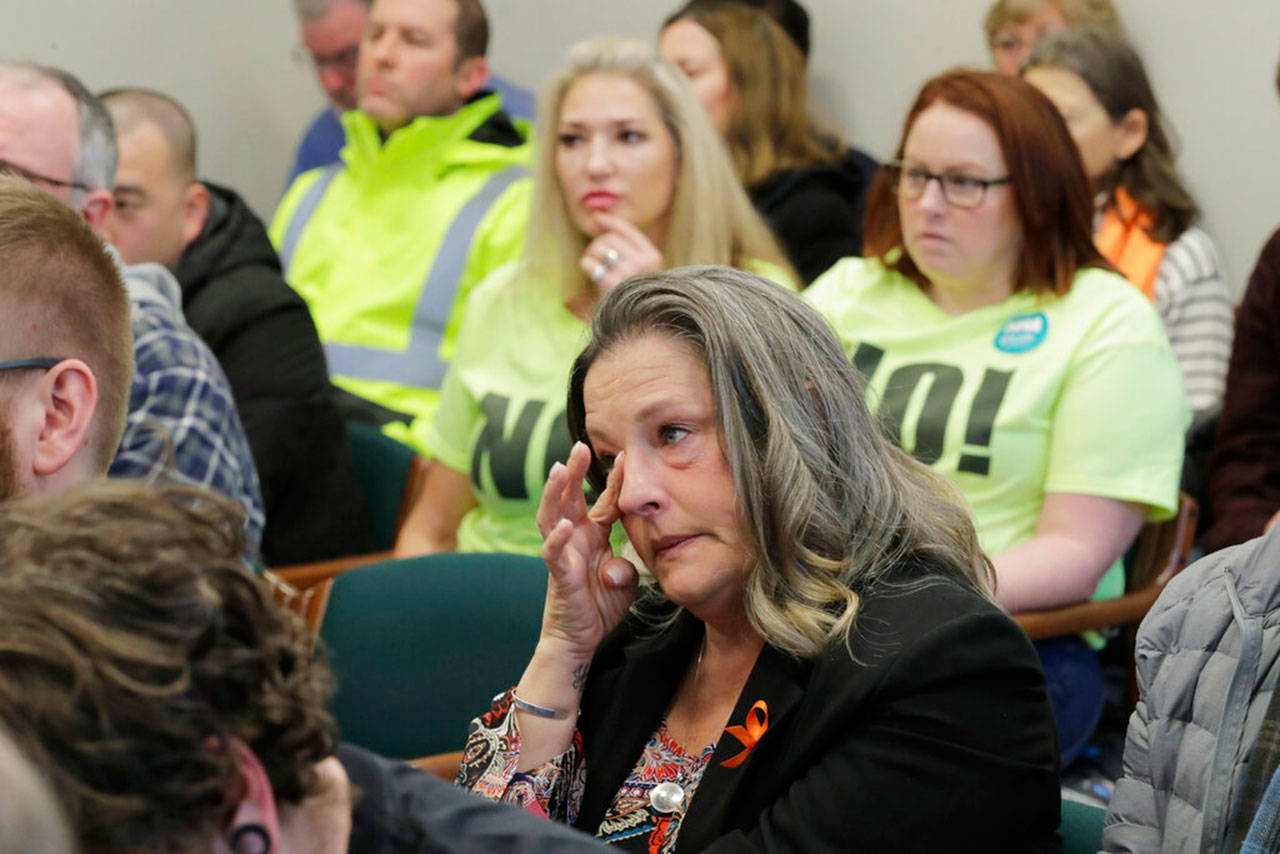By The Herald Editorial Board
More than a few good ideas in the state Legislature have been saved — not by the bell — but by the budget.
Such a bill saved this session may save lives in the state.
Most legislation, as the Legislature nears the end of a session, must be adopted by its chamber of origin and move on for consideration by the other by a certain date; otherwise the bill typically must wait to be refiled next year. The exception to that rule are bills that are considered necessary to the budget, whether that’s the major budget adopted every two years, or the supplemental budget adopted between them, as with this year.
Legislation with a budget angle, regarding taxes, spending or both, gets a little extra time for consideration or, as happened earlier this month, a second chance after being scuttled by political maneuvering. That was the case for a proposal in the House that would have outlawed large-capacity ammunition magazines for firearms, limiting such devices to 15 rounds.
With the deadline approaching and time limited for debate on the floor, Republicans heaped 120 amendments on House Bill 2240, effectively filibustering the bill and killing it.
House Republicans — one in particular, Rep. Jesse Young, R-Gig Harbor — gloated, reported The Herald’s Jerry Cornfield.
Young, responsible for most of the armory of amendments, posted a home-made meme to Facebook with a thumbs-up photo that read: “How do you stop a bad bill while in the minority? Hundreds of good amendments and the willingness to fight.”
Supporters of the proposal, including Rep. Strom Peterson, D-Edmonds, however, weren’t content to wait until next year. They filed a new bill, this time shorter and perhaps less prone to filibustering amendments, and with an added budgetary provision to buy back large-capacity magazines, as the state did when it adopted legislation in 2018 to ban bump stocks and buy those back from owners.
House Bill 2947 was introduced last week and had a public hearing Tuesday before the House Finance Committee.
As with the original bill, its replacement would make it unlawful, with specific exceptions, to buy or sell large-capacity magazines holding more than 15 rounds. People in possession of such magazines before the act takes effect could continue to keep and use them but with certain conditions, including for safe storage and transportation.
The new legislation would authorize the Washington State Patrol — as it did for bump stocks — to establish a buy-back program, which would be funded by the end of a tax break on the sale of precious metals and bullion.
And like the bump stock ban — which outlawed devices that essentially turn semi-automatic weapons into fully-automatic machine guns — the intention here is to limit the carnage that can result in mass shootings by limiting the capacity of such devices, some of which can carry 50 to 100 rounds. Limit the devices’ capacity and the shooter is forced to change out magazines more often, giving victims more time to run or even confront the shooter and stop the massacre.
Large-capacity magazines are the accessory of choice for most mass shooters; they were used in more than half of all mass shootings in recent years, The Washington Post reported last August, further finding that past federal and current state restrictions on the devices have been effective in limiting, at least, the number of dead.
Currently, nine states and the District of Columbia have bans that limit magazines, most to 10 bullets. The result, says Michael Siegel, a community health sciences professor at Boston University, following an analysis, is that magazine bans have been effective in limiting deaths from mass shootings.
“Whether a state has a large capacity ammunition magazine ban is the single best predictor of the mass shooting rate in that state, ” he told CNN in 2017. States with the magazine ban reported a 63 percent lower rate of mass shootings.
Opponents have protested that, as with other restrictions, this law would put law-abiding gun owners at a disadvantage and would be ignored by criminals.
The experience of states that have magazine limits would seem to counter that argument, but even if true, why make it any easier for those who intend to end the lives of innocents?
Nor do large-capacity magazines offer much in the way of utility in terms of hunting or self-defense. The founder of a pro-gun website, The Truth About Guns, Robert Farago, although he has argued against magazine bans, has said that the larger magazines can weigh down a firearm, effect posture and impair aim, Slate reported in 2017.
Emily Cantrell, a Seattle resident who survived the 2017 mass shooting in Las Vegas, in which 58 people were killed and more than 400 were wounded, testified before the House committee on Tuesday.
“The people served best by high-capacity magazines are mass shooters,” Cantrell said.
The people of Washington state would be best served by passage of HB 2947.
Coming Sunday
In The Sunday Herald, read commentary by retired Snohomish County elementary school teacher Jane Weiss, who lost her niece in a 2014 mass shooting in California in which seven people died and 14 were injured. The gunman was armed with three guns and 400 rounds of ammunition in large-capacity magazines.
“Right now, the Washington state Legislature has the opportunity to prevent senseless acts of gun violence — like the one that stole the life of my niece — by prohibiting high-capacity magazines,” Weiss writes.
Talk to us
> Give us your news tips.
> Send us a letter to the editor.
> More Herald contact information.

























